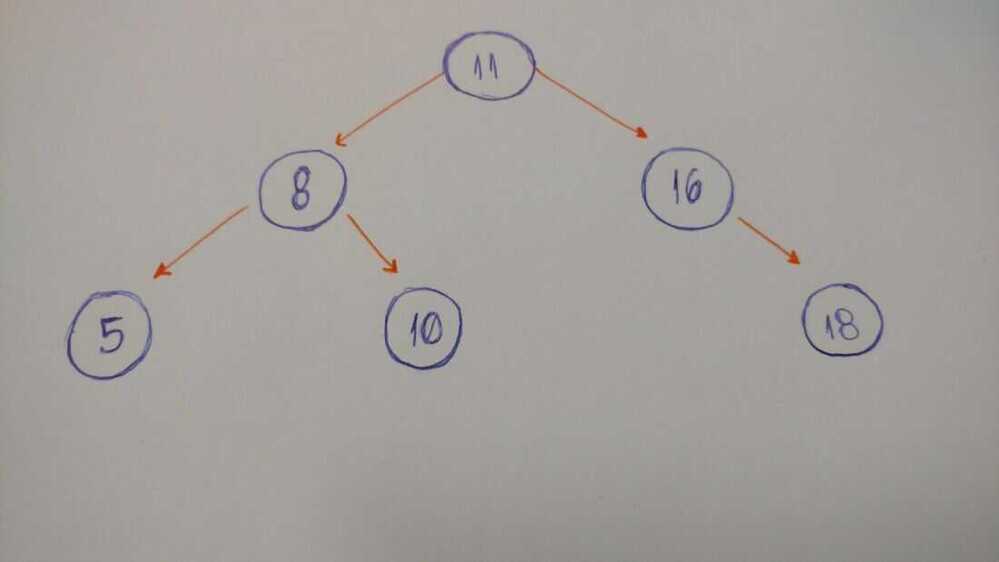Binary Tree
Properties
- In Binary tree, number of leaf nodes is always one more than nodes with two children.
L = T + 1 Where L = Number of leaf nodes T = Number of internal nodes with two children
Types of Binary Tree
- A rooted binary tree has a root node and every node has at most two children.
- A full binary tree (sometimes referred to as a proper or plane binary tree)is a tree in which every node has either 0 or 2 children. Another way of defining a full binary tree is a recursive definition. A full binary tree is either:
- A single vertex.
- A tree whose root node has two subtrees, both of which are full binary trees.
- In a complete binary tree every level, except possibly the last, is completely filled, and all nodes in the last level are as far left as possible. It can have between 1 and 2hnodes at the last levelh.An alternative definition is a perfect tree whose rightmost leaves (perhaps all) have been removed. Some authors use the termcompleteto refer instead to a perfect binary tree as defined below, in which case they call this type of tree (with a possibly not filled last level) analmost completebinary tree ornearly completebinary tree.A complete binary tree can be efficiently represented using an array.
- A perfect binary tree is a binary tree in which all interior nodes have two childrenandall leaves have the samedepthor samelevel.An example of a perfect binary tree is the (non-incestuous)ancestry chart of a person to a given depth, as each person has exactly two biological parents (one mother and one father). Provided the ancestry chart always displays the mother and the father on the same side for a given node, their sex can be seen as an analogy of left and right children, childrenbeing understood here as an algorithmic term. A perfect tree is therefore always complete but a complete tree is not necessarily perfect.
- In the infinite complete binary tree, every node has two children (and so the set of levels is countably infinite). The set of all nodes is countably infinite, but the set of all infinite paths from the root is uncountable, having the cardinality of the continuum. These paths correspond by an order-preserving bijection to the points of the Cantor set, or (using the example of a Stern--Brocot tree) to the set of positive irrational numbers.
- A balanced binary tree is a binary tree structure in which the left and right subtrees of every node differ in height by no more than 1.One may also consider binary trees where no leaf is much farther away from the root than any other leaf. (Different balancing schemes allow different definitions of "much farther".)
- A degenerate(or pathological) tree is where each parent node has only one associated child node.This means that the tree will behave like a linked list data structure.
https://en.wikipedia.org/wiki/Binary_tree#Types_of_binary_trees
Binary Tree
Empty or node with links to left and right binary trees.
This is neither full nor complete
This is both full and complete
Full Binary tree / proper binary tree / 2-tree / strictly binary tree
Tree in which every node other than the leaves has two children.
This is full but not complete
Complete tree
Perfectly balanced, except for bottom level, and all nodes are as far left as possible.
- Height of complete tree with N nodes is floor(lg N)
- Height only increases when N is a power of 2
This is complete but not full
Binary trees
In computer science, a binary tree is a tree data structure in which each node has at the most two children, which are referred to as the left child and the right child."---Wikipedia

The first thing we need to keep in mind when we implement a binary tree is that it is a collection of nodes. Each node has three attributes: value, left_child, and right_child. How do we implement a simple binary tree that initializes with these three properties?
class BinaryTree:
def __init__(self, value):
self.value = value
self.left_child = None
self.right_child = None
When we instantiate an object, we pass the value (the data of the node) as a parameter. Look at the left_child and the right_child. Both are set to None. Because when we create our node, it doesn't have any children. We just have the node data. We can pass the string 'a' as the value to our Binary Tree node. If we print the value, left_child, and right_child, we can see the values. We will implement a method to insert a new node to the right and to the left. Here are the rules:
- If the current node doesn't have a left child, we just create a new nodeand set it to the current node's left_child.
- If it does have the left child, we create a new node and put it in the current left child's place. Allocate this left child node to the new node's left child.
def insert_left(self, value):
if self.left_child == None:
self.left_child = BinaryTree(value)
else:
new_node = BinaryTree(value)
new_node.left_child = self.left_child
self.left_child = new_node
Again, if the current node doesn't have a left child, we just create a new node and set it to the current node's left_child. Or else we create a new node and put it in the current left child's place. Allocate this left child node to the new node's left child. And we do the same thing to insert a right child node.
def insert_right(self, value):
if self.right_child == None:
self.right_child = BinaryTree(value)
else:
new_node = BinaryTree(value)
new_node.right_child = self.right_child
self.right_child = new_node
https://www.geeksforgeeks.org/handshaking-lemma-and-interesting-tree-properties
https://www.freecodecamp.org/news/how-to-implement-binary-tree-algorithms-in-technical-interviews